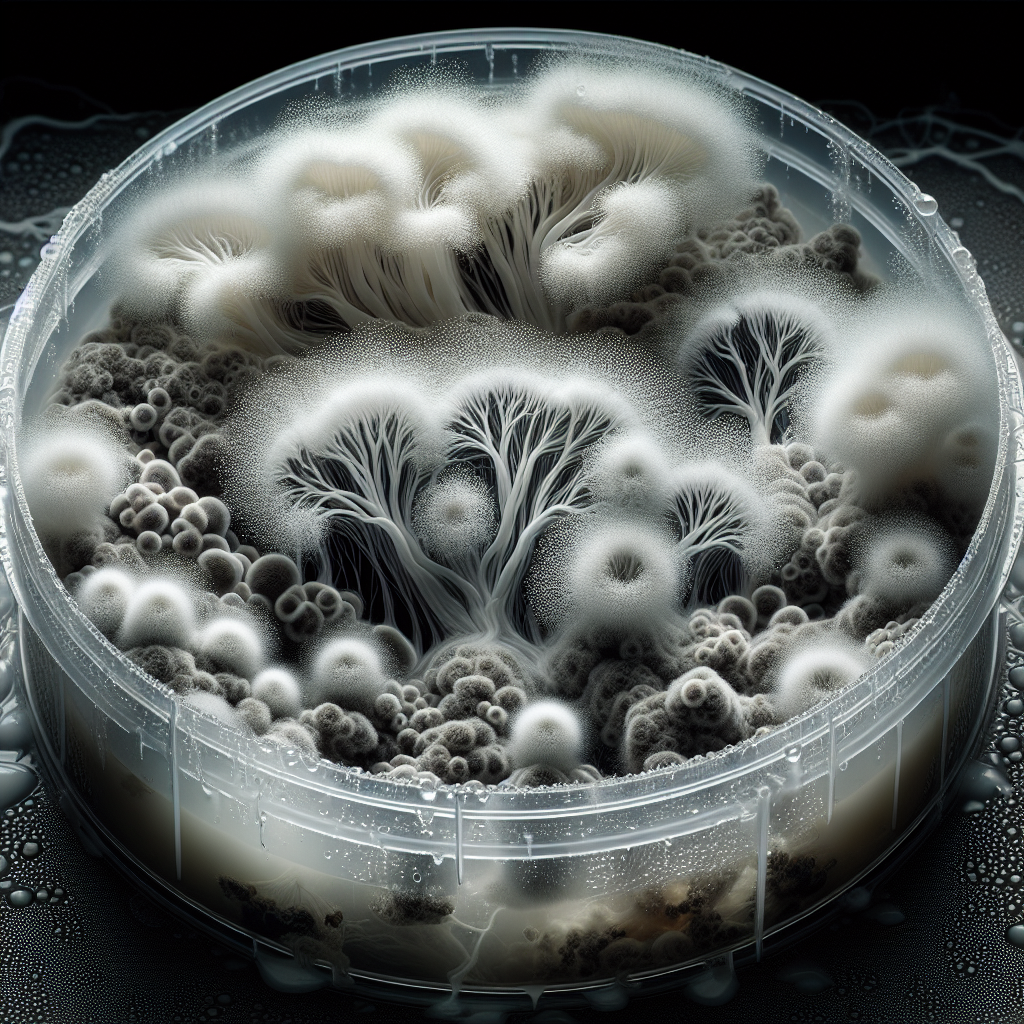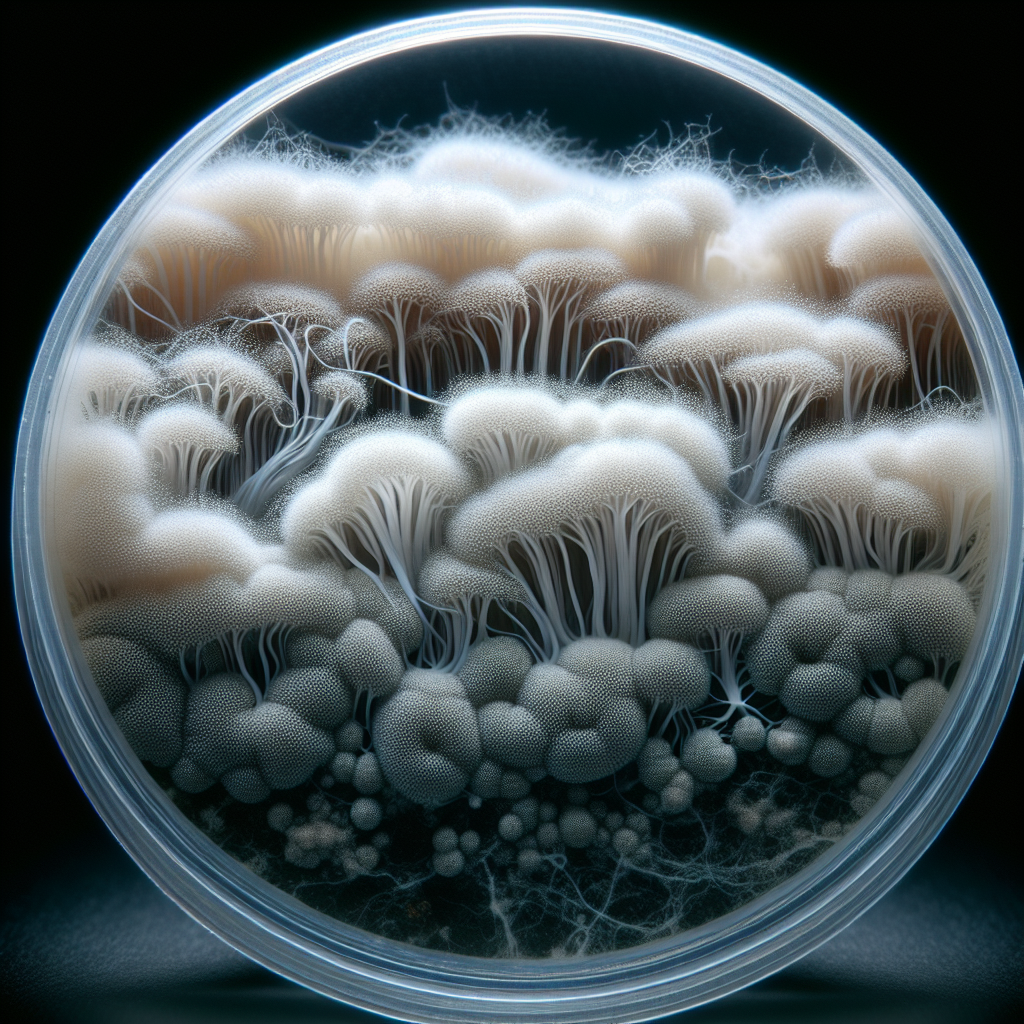In this comprehensive guide, “Monotub Mycelium Cultivation: An In-Depth Guide”, you will uncover the fascinating realm of mycelium and its cultivation in monotub systems. It meticulously breaks down the intricate process of growing these fungal networks, providing keen insights into conditions for optimal growth, selection of substrates, and the important stages of cultivation. You will gain practical knowledge to successfully cultivate your own mycelium in a monotub, and understand why this method is preferred by mycologists all around the globe. The guide stands as a testament to the unexplored potential that lies in mycelium, intertwined with practical guidance and expert advice to power your journey.
Understanding Mycelium and Its Importance
Mycelium forms the foundation of fungal life. For successful mushroom cultivation, it’s essential to comprehend mycelium’s basic characteristics and the role it plays.
Definition of Mycelium
The term ‘mycelium’ refers to the vegetative part of a fungus. It is a network of thread-like structures, or hyphae, forming a web-like structure beneath the ground. This under-the-radar network serves as the root system for a mushroom. In the right environmental conditions, mycelium develops and forms the mushrooms we see above the soil.
Role of Mycelium in Fungal Cultivation
Mycelium’s purpose is crucial in fungal cultivation. It serves as the base from which mushroom fruit bodies grow. Mycelium enmeshes the substrate or material it grows on, extracting valuable nutrients for growth. During this process, it reproduces by producing spores that give rise to new mycelial networks and subsequently, to more mushrooms. Therefore, fungal cultivation is centered on promoting and maintaining healthy mycelium.
Benefits of Mycelium
Mycelium has several benefits both for the environment and for cultivation processes. In nature, mycelium contributes to soil fertility and ecosystem regulation by decomposing organic matter and recycling nutrients. When it comes to cultivation, it serves as a highly desirable organism for growing edible and medicinal mushrooms. Furthermore, mycelium has potential uses in areas like sustainable construction and waste management, given its high growth rate and biodegradability.
Overview of Monotub Cultivation
Monotub cultivation is a specific method of cultivating mushrooms, preferred for its simplicity and effectiveness.
Definition of Monotub Cultivation
Monotub cultivation refers to the process of growing mushrooms in a single, large, and simplistic environmental chamber, typically a plastic storage container. This type of cultivation technique is ideal for amateur and first-time cultivators because it is low-cost, low-maintenance, and generally yields high results.
Importance of Monotub Cultivation Method
The simplicity, high yield, and cost-effectiveness of monotub cultivation have made it a popular choice among growers. Ideal for beginners, it requires minimal supervision and allows for the successful growth of mushrooms with minimal risk of contamination. The solitary structure of a monotub also helps maintain the ideal environment for mycelial growth, making it a dependable choice for both small-scale and large-scale cultivation.
Comparison with Other Cultivation Methods
Compared to other cultivation methods, monotub offers several advantages. Unlike the ‘bag’ method or complex environmental chambers, monotub cultivation needs only standard household items and allows for more control over humidity and temperature. The method also helps to yield a larger crop in comparison to methods like the cake method.

Getting Started: Materials Needed for Monotub Cultivation
Once you understand monotub cultivation’s basics, you’ll need to gather the necessary materials to begin your cultivation journey.
Cultivation Tub Requirements
The first fundamental for monotub cultivation is the tub. Any large plastic storage tub can be used, provided it has a tight-fitting lid that can be modified for gas exchange. Additionally, the tub should be transparent or semi-transparent to allow light penetration, which is necessary for mushroom growth.
Selecting the Right Mushroom Spores
Choosing the correct mushroom spores is crucial for a successful yield. Some strains, particularly oyster species, are beginner-friendly and adapt well to monotub conditions. Always source your spores from a reputable provider to ensure the quality and viability of the fungi.
Substrate Options and Preparation
A substrate is the nutrient-dense medium on which your mycelium will grow. Various substrate options are suitable for monotub cultivation, such as straw, wood chips, or a mixture of both. The substrate should be prepared correctly by pasteurizing or sterilizing to kill any potential contaminants that might hinder the growth of your mycelium.
Additional Tools for Cultivation Process
Apart from the fundamental materials, additional tools distinct to this process include a heat source for pasteurizing substrate, a clean working area, disposable gloves, filter materials, a drill for ventilation holes, and a sealer or tape to regulate gas exchange.
Building a Monotub
Once the required materials are ready, start the actual process of building your monotub.
Basic Construction Guidelines
The construction of a monotub is a simple process. Drill holes on all sides of the tub and cover with filter material to allow air exchange while keeping out contaminants. Then, prepare the inside of the tub by sanitizing carefully to ensure it’s contamination-free, ready for the introduction of the substrate and spawn.
Proper Ventilation Considerations
Proper ventilation is fundamental for monotub cultivation. The drilled holes allow for air exchange, preventing an accumulation of excess carbon dioxide, promoting adequate oxygen levels, and maintaining the necessary humid environment for mushroom growth.
Setting up Filter & Lid
Aftercreating the ventilation holes, cover them using a filter material such as polyfill or micropore tape. These materials allow necessary gas exchange while keeping out potential pathogens. Remember to place the lid on tightly to secure the inner environment of the monotub.
Safety Precautions during Construction
Construction safety is essential in monotub setup. Always follow safe tool usage guidelines when drilling and setting up your monotub. Use gloves when handling substrate and spawn to prevent contamination. Sanitize your working area and your hands regularly.

Preparation of the Spawn and Substrate
Getting your spawn and substrate ready is the next step in the monotub cultivation process.
Choosing the Spawn
‘Spawn’ refers to the mycelium once it’s fully colonized a growing medium (such as grain). There are numerous types of spawn to choose from, with grain spawn being the most common due to its affordability and the speed at which mycelium can colonize it.
Preparation Process of Spawn
The preparation of spawn depends primarily on its type. Grain spawn, for instance, is usually soaked, boiled, and then sterilized, creating an ideal environment for mycelium to thrive and colonize.
Choosing the Substrate
The substrate choice varies depending on the mushroom species being grown. A mixture of straw and wood chips is common due to its availability and cost-effectiveness. However, always make sure to choose a substrate that’s compatible with your chosen mushroom strain.
Preparation Process of Substrate
Substrate preparation is important, as it eliminates potential contaminants that could harm mycelium growth. This process usually involves pasteurization or sterilization. Both methods effectively kill off harmful contaminants, but pasteurization is often preferred as it leaves beneficial microbes intact.
The Inoculation Process
Inoculation marks the beginning of your mycelium’s growth journey in the monotub setup. Only proceed after your substrate and spawn are well-prepared and ready.
Process of Inoculation
The inoculation process involves introducing the prepared spawn to the substrate in your monotub. This is done by layering spawn and substrate in the tub until it’s filled, then putting the lid on, ensuring airtightness so that the desired environment is maintained.
Ensuring a Sterile Environment during Inoculation
Maintaining a sterile environment during inoculation is imperative. Make sure the area and all tools used are clean and sanitized. Sterilize your hands and wear gloves throughout the process to minimize contamination risks.
Potential Problems and Solutions
Potential challenges during inoculation may include contamination and insufficient colonization of the mycelium. Avoid contamination by sterilizing everything properly and maintaining aseptic conditions throughout. If colonization isn’t happening effectively, make sure the conditions are appropriate; moisture, temperature, and light should all be at optimal levels for your mushroom species.
Cultivating Mycelium in Monotub
After successful inoculation, your mycelium will begin to grow and colonize the substrate.
Creating Ideal Growth Conditions for Mycelium
Mycelium growth requires specific conditions, depending on the mushroom species. Ensure you maintain proper humidity, temperature, and light in the monotub for successful cultivation. Sufficient air circulation is also vital. Monitor these conditions regularly for any adjustments.
Monitoring Growth and Spotting Contamination
Regularly check the monotub for signs of mycelial growth and potential contamination. Healthy mycelium generally has a cottony or fluffy look and can be white or off-white. Contamination might present as unusual colors, odors, or growth patterns. Act promptly if you notice anything abnormal.
Harvesting Mature Mycelium
After successfully cultivating your mycelium, harvesting can take place. This usually involves picking the mushrooms that have formed and considering whether to prepare the substrate for a second cultivation cycle.
Understanding and Handling Common Problems
Mycelium cultivation comes with its share of challenges. It’s essential to identify these problems early and provide appropriate solutions.
Identifying and Treating Contamination
Contamination is a common problem in mycelium cultivation. If you notice unusual colors, smells, or growths, isolate the tub to prevent cross-contamination, and assess whether to discard the whole setup or remove only the contaminated sections.
Dealing with Slow Growth
Slow growth can imply that conditions are not optimal for your mycelium. Review your monotub’s temperature, light, and humidity. It may also indicate that the substrate’s nutrients are depleted, in which case you might need to consider replenishing it.
Understanding Dry or Wet Conditions
Very dry conditions can inhibit mycelium growth, while overly wet conditions can promote bacteria. Ensure your monotub maintains the right level of moisture.
Reaping and Using Harvested Mycelium
The final phase includes harvesting mature mycelium and deriving benefit from it.
When and How to Harvest
Harvesting time for mushrooms grown from mycelium usually occurs when the caps open and before the release of spores. Use clean hands or tools to remove mushrooms gently from the substrate.
Proper Handling of Harvested Mycelium
Post-harvest, it’s crucial to handle your mycelium carefully. Always store mushrooms appropriately in a cool, dry place to avoid spoilage.
Potential Uses of Mycelium
Harvested mycelium (mushrooms) can be used for a variety of purposes. They serve as food rich in protein, vitamins, and antioxidants. They can also be utilized for medicinal purposes, given their multiple potential health benefits.
Safety Considerations and Legal Implications
The final part of this guide covers crucial safety and legal considerations associated with mycelium cultivation.
Understanding the Risks of Mushroom Cultivation
Mushroom cultivation involves a few risks, including potential for contamination, allergic reactions, and accidental ingestion of poisonous species. Always follow safety guidelines, use the proper equipment, and correctly identify your mushroom species.
Legal Considerations of Cultivating Psychedelic Mushrooms
Remember that while certain mushroom species are legal to cultivate, others, such as psychedelic mushrooms, are often controlled substances and illegal to grow without proper authorization. Always verify your local laws and guidelines before starting your cultivation journey.
Ensuring Safe Consumption
People consume mushrooms for various purposes, such as culinary or medicinal. Whatever the purpose may be, ensure that mushrooms are correctly identified, properly prepared, and consumed safely.
In conclusion, cultivation of mycelium in monotubs is a rewarding and educational experience. With proper understanding, planning, and meticulous attention to detail, you are well on your way to successfully cultivating your own mycelium!
